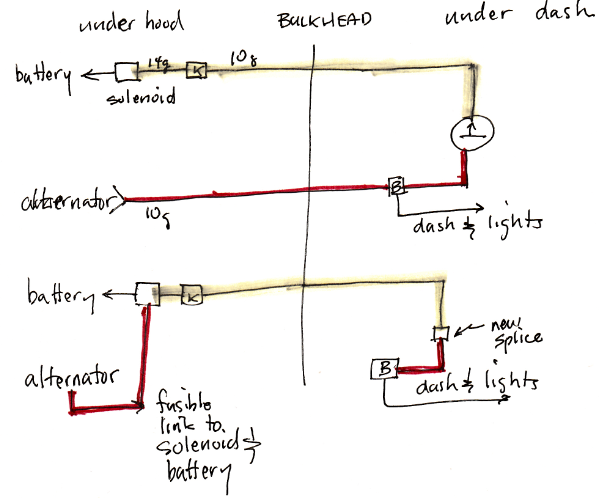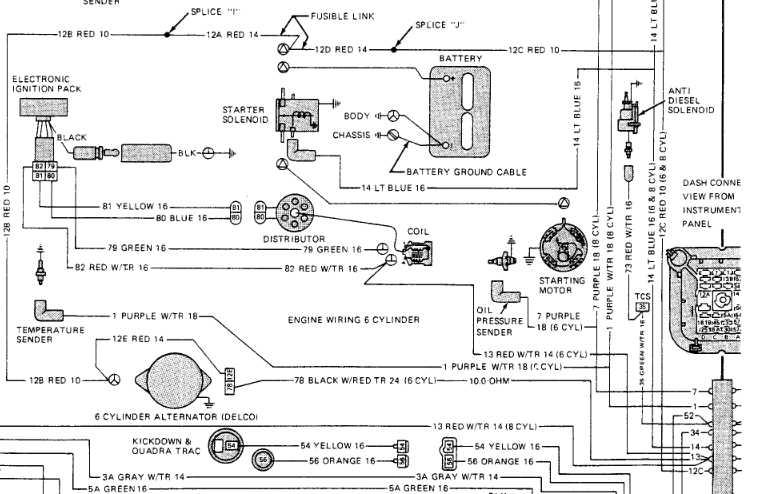Ok, so I just found a number of wiring hacks from PO that almost burned my Jeep up. As such, I have decided to re-do much of the wiring on my wagoneer in an attempt to improve safety. Part of my mods will include ammeter delete. I will replace it with a voltmeter due to the improved fire resistance. I also plan on running a 4 ga (or bigger depending on what I have available already) wire from the alternator ?bat? post directly to the constant side of the starter solenoid.
That brings me to my question.
When doing this, should I keep the yellow 10 ga wire with the fusible link that would now supply my voltmeter and then link the old ammeter red wire to the same post on the voltmeter in order to feed the factory splice that was downstream of the ammeter and the delete the red 10 ga wire that used to run from the splice to the ?bat? post on the alternator?
Or
Delete that entire yellow wire w/ fusible link and run directly a wire from the constant post on the starter solenoid to the splices and then tap a wire from the splice to the voltmeter?
Lastly, should any of this be run thru a circuit breaker or fuse? I have a spare marine 100A and 150A breaker I could add to this system somewhere, but where to put it.
I know this mod has been done (as I?ve read a number of posts) but I don?t see anything specific about which wires to keep/delete. I also am planning on keeping the stock alternator for now, but will likely upgrade to a bigger one in the future, so whatever I do now I would like to have it future proof (as much as possible).
Thanks for any help.
That brings me to my question.
When doing this, should I keep the yellow 10 ga wire with the fusible link that would now supply my voltmeter and then link the old ammeter red wire to the same post on the voltmeter in order to feed the factory splice that was downstream of the ammeter and the delete the red 10 ga wire that used to run from the splice to the ?bat? post on the alternator?
Or
Delete that entire yellow wire w/ fusible link and run directly a wire from the constant post on the starter solenoid to the splices and then tap a wire from the splice to the voltmeter?
Lastly, should any of this be run thru a circuit breaker or fuse? I have a spare marine 100A and 150A breaker I could add to this system somewhere, but where to put it.
I know this mod has been done (as I?ve read a number of posts) but I don?t see anything specific about which wires to keep/delete. I also am planning on keeping the stock alternator for now, but will likely upgrade to a bigger one in the future, so whatever I do now I would like to have it future proof (as much as possible).
Thanks for any help.










Comment